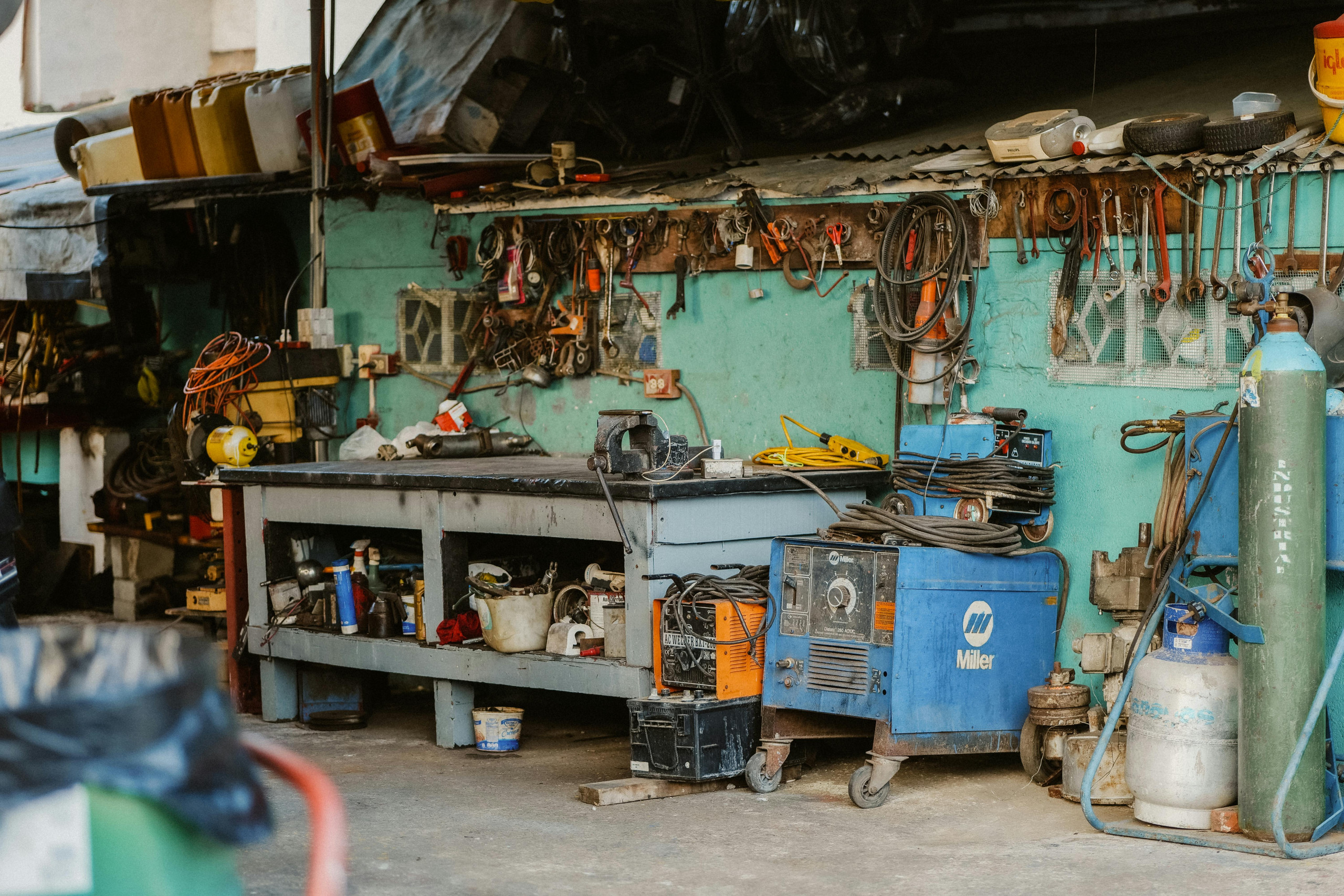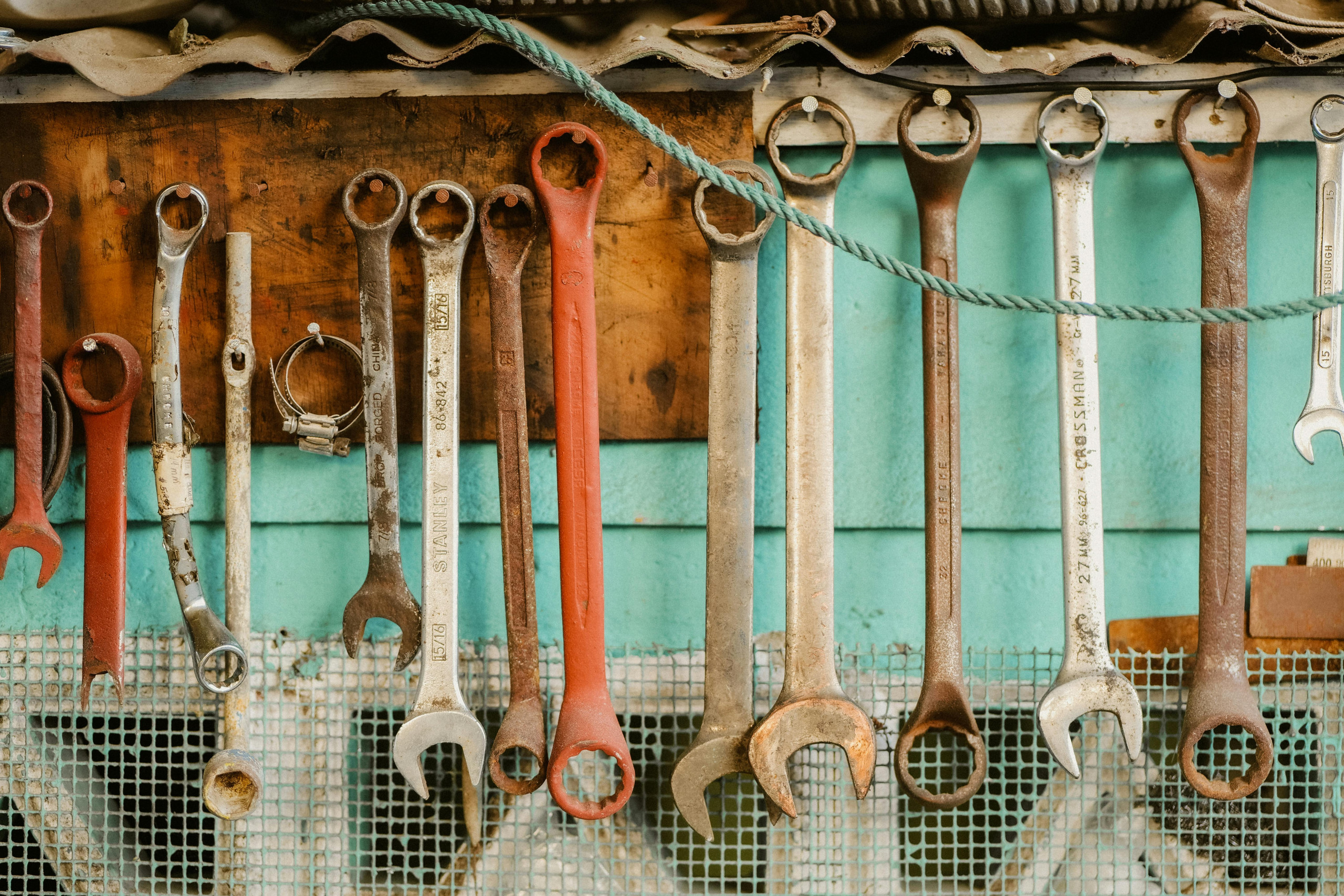Imagine using a tool that fits perfectly in your hand, allowing you to effortlessly cut, grind, and polish with precision. That’s the power of understanding the ergonomics of handling an electric die grinder. In this article, we will explore the importance of ergonomic design and how it can enhance your grip, minimize fatigue, and ultimately improve the quality of your work. Whether you’re a professional craftsman or a DIY enthusiast, unlocking the secrets of ergonomic handling can revolutionize your tool experience. Let’s dive into the world of electric die grinders and discover the key to comfortable and efficient operation.

Importance of Understanding Ergonomics
Ergonomics is a crucial aspect of using an electric die grinder safely and efficiently. By understanding and implementing ergonomic principles, you can reduce the risk of injuries, increase productivity, and enhance your overall satisfaction with the tool. This article will explore the various aspects of ergonomics in handling an electric die grinder and provide valuable insights on how to optimize your use of this powerful tool.
Enhances Safety
One of the primary benefits of incorporating ergonomic practices when using an electric die grinder is improved safety. By considering factors such as handle design, vibration levels, and body positioning, you can significantly reduce the risk of accidents and injuries. Ergonomically designed grinders often feature safety mechanisms specifically engineered to mitigate potential hazards, ensuring a secure and protected work environment.
Improves Efficiency
Efficiency is another critical aspect impacted by ergonomics. A well-designed electric die grinder with ergonomic features allows for smoother and more precise operation, leading to increased productivity. By reducing hand fatigue and discomfort, proper ergonomics enable you to work for longer periods without sacrificing accuracy or speed. This can be particularly beneficial in jobs that require prolonged grinding tasks.
Reduces Fatigue and Discomfort
Proper ergonomics can play a vital role in reducing fatigue and discomfort associated with using an electric die grinder. Ergonomically designed handles, adjustable grips, lightweight construction, and vibration dampening features all contribute to a more comfortable user experience. By minimizing the strain on your hands, wrists, and body, you can work longer, complete tasks more effectively, and avoid common injuries caused by repetitive motions.
Ergonomic Design Features
When choosing an electric die grinder, it is important to consider the ergonomic design features incorporated into the tool. These features are specifically engineered to enhance user comfort and efficiency. Here are some essential ergonomic design features to look for:
Ergonomic Handle
An ergonomic handle is one of the key design elements to consider when selecting an electric die grinder. The handle should be designed to fit comfortably in your hand, providing a secure grip without causing strain or discomfort. Look for handles with non-slip materials and contours that conform to the natural shape of your hand.
Adjustable Grip
Not everyone’s hands are the same size, so an adjustable grip is a valuable feature to have in an electric die grinder. Being able to customize the grip allows you to find the most comfortable hand placement, reducing strain and fatigue. Look for grinders that offer adjustable grip options to accommodate different hand sizes.
Lightweight Construction
Using a heavy electric die grinder for extended periods can quickly lead to fatigue and discomfort. Opt for grinders made from lightweight materials without sacrificing durability. A lighter tool will reduce the strain on your hands and arms, allowing for more extended use without experiencing excessive fatigue.
Vibration Dampening
Vibration is a common issue with electric die grinders, and prolonged exposure to high levels of vibration can lead to hand-arm vibration syndrome (HAVS). Look for grinders with built-in vibration dampening features that minimize the transmission of vibrations to your hands and arms. This not only reduces the risk of HAVS but also improves overall comfort during extended use.
Low Noise Levels
Noise can be another factor that impacts your comfort and safety when using an electric die grinder. Look for grinders that offer low noise levels to prevent hearing damage and reduce the stress caused by loud operating environments. A quieter tool can also contribute to a more pleasant and focused working environment.
Proper Hand Placement
Proper hand placement is essential for maximizing control and minimizing strain when handling an electric die grinder. By understanding the correct hand positioning and maintaining a relaxed grip, you can improve your overall comfort and precision during operation.
Thumb Placement
When using an electric die grinder, the thumb of your dominant hand should be placed on the side of the tool’s handle, opposite to your fingers. This placement allows you to have a firm and stable grip while still maintaining control and maneuverability. Avoid placing your thumb on the grinder’s front or top, as this can disrupt balance and hinder precise control.
Finger Placement
Your fingers should wrap around the handle with a relaxed grip, ensuring your fingertips can easily reach the grinder’s controls. Avoid gripping the handle too tightly, as excessive tension can increase fatigue and limit your flexibility. Maintain a loose yet secure grip that allows for smooth and controlled movements.
Maintaining a Relaxed Grip
It is important to maintain a relaxed grip throughout the operation of an electric die grinder. This reduces strain and fatigue on your hands and wrists, allowing for longer and more efficient use. Avoid gripping the handle too tightly or squeezing it unnecessarily. Instead, focus on holding the tool with a grip that is firm enough for control but loose enough to prevent muscle tension.
Body Positioning
In addition to proper hand placement, maintaining correct body positioning is crucial when using an electric die grinder. By considering stability, balance, wrist position, and adequate lighting, you can minimize strain and maintain optimal comfort during use.
Stability and Balance
Maintaining stability and balance is crucial to prevent accidents and ensure precise grinding. Stand with your feet shoulder-width apart and distribute your body weight evenly to enhance stability. This stance provides a solid foundation and reduces the risk of losing control or slipping during operation.
Maintaining a Neutral Wrist Position
The position of your wrists plays a significant role in minimizing strain and discomfort. Aim to keep your wrists in a neutral or straight position while operating the grinder. Avoid flexing or extending your wrists excessively, as this can lead to wrist pain and potential musculoskeletal issues. If necessary, adjust the grip or use additional supports to achieve a neutral wrist position.
Avoiding Awkward Postures
Adopting awkward postures, such as leaning or twisting your body, can strain your muscles and increase the risk of injury. Maintain a straight and upright posture while using the electric die grinder, ensuring your body remains aligned. Avoid overreaching or bending excessively, as this can cause unnecessary strain on your upper body.
Using Adequate Lighting
Proper lighting is essential for maintaining visibility and reducing eye strain during grinding tasks. Insufficient lighting can lead to errors, poor judgment, and increased eye fatigue. Ensure the work area is well-lit and position task lighting if needed, allowing you to see the workpiece clearly and perform tasks with greater accuracy and efficiency.

Choosing the Right Tool
Selecting the right electric die grinder for your needs is crucial to optimize ergonomics and ensure a comfortable and efficient work experience. Consider the following factors when choosing a grinder:
Consider the Weight
The weight of the grinder is an essential aspect to consider when prioritizing ergonomics. Opt for a grinder that is lightweight and balanced, as this will reduce the strain on your hands and arms during prolonged use. Heavy grinders can quickly lead to fatigue and discomfort, limiting your ability to work efficiently.
Evaluate Handle Design
The handle design of an electric die grinder directly impacts your comfort and control. Look for handles that are ergonomically shaped and made from non-slip materials. Test the grip before purchasing to ensure it fits comfortably in your hand and offers a secure hold. Handles with adjustable grip options can provide added flexibility to accommodate various hand sizes.
Assess Vibration Levels
High levels of vibration can lead to discomfort, fatigue, and potential long-term health issues. During the selection process, assess the vibration levels of different grinders and opt for models with built-in vibration dampening features. Minimizing vibrations not only improves comfort but also reduces the risk of hand-arm vibration syndrome (HAVS).
Select Suitable Disc Sizes
Consider the size and type of grinding discs suitable for the tasks you will be performing. Larger discs tend to require more force and can increase the strain on your hands and arms. Evaluate the specific needs of your projects and select a grinder that accommodates appropriate disc sizes for optimal ergonomics.
Choosing the Appropriate Power Source
Different electric die grinders offer various power sources, including corded and cordless options. Consider the nature of your work and the portability requirements when selecting a power source. Cordless grinders provide more freedom of movement, while corded ones offer consistent power but require an electrical outlet. Choose the power source that best suits your needs and enhances your ergonomics.
Ergonomic Accessories
In addition to selecting the right grinder, using ergonomic accessories can further enhance your comfort and safety. These accessories are designed to provide additional support and protection during grinding tasks. Consider incorporating the following accessories into your work routine:
Anti-Vibration Gloves
Anti-vibration gloves are specifically designed to reduce the transmission of vibrations from power tools to your hands. They provide cushioning and support, effectively reducing the risk of hand-arm vibration syndrome (HAVS) and increasing overall comfort.
Safety Goggles
Safety goggles are essential when working with an electric die grinder to protect your eyes from dust, debris, and sparks. Choose goggles that fit properly and provide a clear field of vision. Ensure they meet relevant safety standards and are designed for use with power tools.
Ear Protection
Grinding tasks often generate high levels of noise, which can potentially damage your hearing. Ear protection such as earmuffs or earplugs can significantly reduce the noise levels, protecting your ears from potential harm and minimizing distractions caused by excessive sound.
Dust Masks
Grinding creates airborne particles and dust that can be detrimental to your respiratory system. Wear a dust mask or respirator to prevent inhalation of harmful particles and ensure clean air intake. Choose masks with appropriate filtration capabilities to provide maximum protection.

Training and Education
Proper training and education are essential for using an electric die grinder safely and effectively. By acquiring a thorough understanding of grinder functionality, learning correct operating techniques, and identifying and addressing potential hazards, you can ensure a secure and productive work environment.
Understanding Grinder Functionality
Before operating an electric die grinder, familiarize yourself with its various components, features, and functionalities. Read the manufacturer’s instructions and guidelines to understand how the grinder operates and ensure safe usage. Understanding the grinder’s functions allows you to make informed decisions during operation and prevent potential accidents.
Learning Correct Operating Techniques
Learning and implementing correct operating techniques is crucial to optimize ergonomics and maximize efficiency. Seek training or guidance from experienced professionals to learn proper handling, tool positioning, and grinding techniques. Mastering these techniques will not only enhance your safety but also improve the quality and precision of your work.
Identifying and Addressing Potential Hazards
Electric die grinders come with their own set of risks and hazards. Educate yourself on the potential dangers associated with grinder operation, such as kickback, flying debris, or electrical shocks. Learn how to identify and address these hazards effectively to minimize the risk of accidents and injuries.
Regularly Updating Skills and Knowledge
Ergonomics and safety practices within the workplace are constantly evolving. Stay updated on the latest trends, advancements, and regulations related to using an electric die grinder. Attend refresher courses, workshops, or seminars to enhance your skills and ensure you are equipped with the most current information and techniques.
Maintaining Ergonomics During Use
To fully benefit from ergonomics, it is crucial to maintain proper practices during the use of an electric die grinder. By incorporating the following tips into your work routine, you can optimize ergonomics, minimize strain, and maximize productivity.
Take Frequent Breaks
Taking regular breaks during grinding tasks allows your muscles to rest and recover from fatigue. Prolonged or continuous use without breaks can lead to excessive strain and increase the risk of injuries. Schedule short breaks at regular intervals, allowing your body to recharge and reduce the risk of musculoskeletal issues.
Practice Correct Posture
Maintaining correct posture throughout grinding tasks is essential for ergonomic handling. Avoid slouching, bending, or twisting your body, as these positions can strain your muscles and lead to discomfort. Keep your back straight, shoulders relaxed, and neck aligned. This posture ensures proper alignment and reduces the risk of injury.
Use Available Supports
When working with an electric die grinder, make use of supports or additional tools to optimize ergonomics. Use workbenches, supports, or clamps to secure the workpiece, allowing for more stable and controlled operations. This reduces the strain on your hands and arms, enhancing comfort and precision.
Ensure Proper Tool Maintenance
Regularly maintaining and servicing your electric die grinder is crucial for maintaining optimal ergonomics and functionality. Follow the manufacturer’s guidelines for maintenance and cleaning. Ensure that the tool is in proper working condition, and any worn-out or damaged parts are replaced promptly. A well-maintained grinder will perform better, reducing the strain on the user.
Common Ergonomic Mistakes
Even with the best intentions, it is easy to fall into common ergonomic mistakes when handling an electric die grinder. Recognizing and avoiding these mistakes can enhance your safety and comfort during operation.
Neglecting Proper Body Mechanics
Improper body mechanics, such as poor posture or incorrect hand positioning, can quickly lead to discomfort and injuries. Stay mindful of your body positioning and ensure you maintain correct posture and hand placement. This will reduce the strain on your muscles and joints, minimizing the risk of musculoskeletal disorders.
Using Excessive Force
Using excessive force while operating an electric die grinder can lead to overexertion and fatigue. Let the grinder’s power and weight do the work for you, using light and controlled movements. Applying excessive force not only strains your muscles but also increases the risk of losing control of the tool.
Lack of Adequate Rest
Failing to take sufficient rest breaks during grinding tasks can result in excessive fatigue and muscle strain. Pushing yourself beyond your physical limits increases the risk of accidents and reduces the quality of your work. Prioritize taking regular breaks and allowing your body to rest and recover.
Ignoring Warning Signs of Discomfort
Disregarding warning signs of discomfort, such as pain or numbness in your hands or wrists, can lead to long-term health issues. Pay attention to your body’s signals and respond accordingly. If you experience any discomfort or pain during grinding tasks, take immediate action to alleviate it and troubleshoot potential ergonomic issues.
Benefits of Ergonomic Handling
Understanding and implementing proper ergonomics when handling an electric die grinder can yield numerous benefits. Here are some key advantages of ergonomic handling:
Reduces Risk of Musculoskeletal Disorders
Adhering to ergonomic practices significantly reduces the risk of developing musculoskeletal disorders, such as carpal tunnel syndrome, tendonitis, or back pain. By minimizing strain on your muscles, tendons, and joints, ergonomic handling promotes long-term health and well-being.
Increases Productivity
When using an electric die grinder ergonomically, you can work for longer periods without experiencing excessive fatigue. Increased comfort and reduced strain improve focus, accuracy, and overall efficiency. This translates into higher productivity and better-quality work.
Enhances Task Precision
Ergonomic handling allows for greater control and precision during grinding tasks. By reducing fatigue and discomfort, your hands and arms remain steady, resulting in more accurate and consistent results. Enhanced precision enables you to achieve the desired outcomes with minimal errors or rework.
Improves Overall User Satisfaction
Implementing ergonomic principles in handling an electric die grinder enhances user satisfaction and overall work experience. Reduced fatigue, improved comfort, and increased productivity contribute to a more pleasant and fulfilling work environment. Ergonomic handling ensures that you can focus on your tasks without unnecessary strain, which can improve your overall job satisfaction.
In conclusion, understanding and implementing ergonomics when handling an electric die grinder are essential for safety, efficiency, and overall user satisfaction. By considering ergonomic design features, proper hand placement, body positioning, and the selection of the right tool and accessories, you can optimize your work experience. Additionally, investing in training and education, maintaining ergonomics during use, and avoiding common ergonomic mistakes further enhance your safety and comfort. Embracing ergonomics not only reduces the risk of injuries and musculoskeletal disorders but also increases productivity, precision, and overall satisfaction with the tool.



